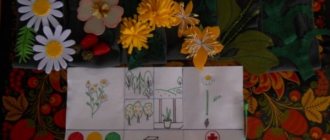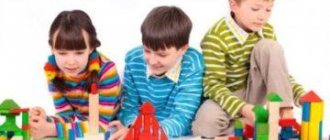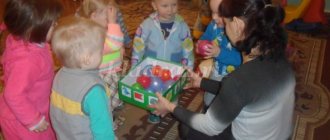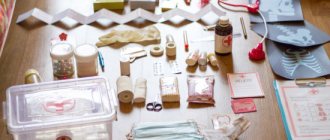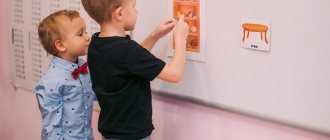Sand therapy for children makes a significant contribution to the development of cognitive and creative abilities, speech, fine motor skills and tactile sensitivity. Sand helps a child get rid of negative emotions, relax and relieve stress. Joint play and creativity with parents have a beneficial effect on family relationships.
Techniques for drawing on a light tablet
1. pouring
. The sand is clenched into a fist and passed through the fingers. The technique is suitable for drawing lines.
2. Pinch
. The child connects the thumb, middle and index fingers, picks up a little sand and scatters it. The method allows you to convey tones and shadows.
3. Palm
. With an open palm, the child levels the layer of sand, erases the drawing, and leaves prints.
4. Fist
. The child squeezes his palm and forms a spot on the sand layer with the back of his hand.
5. Finger painting
. This method allows you to create lines of different thicknesses and points, achieving image clarity. As a rule, children begin to work with their index finger. Encourage your child to use all fingers on both hands and make parallel movements. This stimulates brain activity.
6. Drawing with tools
. Drawings, lines, and ornaments are created using a comb. Pay your child's attention to how the pattern changes depending on the pressure applied.
Who is suitable for sand therapy?
Using this method can be useful for every child, even if he does not have personality disorders, as a method of developing skills and abilities. But there are cases when the use of sand animation for preschoolers is especially recommended:
• If you have fears or severe anxiety;
• With mental retardation;
• With diagnosed neurosis, nervous tics;
• With low self-esteem;
• During outbursts of aggressive behavior;
• In case of difficulties in relationships with others (parents, teachers, peers);
• For depression, apathy, isolation, suicidal thoughts;
• For speech therapy disorders;
• In case of violence or psychological trauma.
A preschool child often has difficulty formulating his experiences. Sand animation therapy will help him overcome this barrier and cope with negative conditions in a playful way.
Games and art therapy exercises
Sandy beach
Invite your child to imagine that he is on the seashore on a sunny day, grains of sand tickle his palms, he can hear the splash of waves, and there is silence all around. Let the baby touch the sand, take a handful while taking a deep breath and squeeze his fingers as hard as possible. As you exhale, the child gradually pours out the sand and relaxes.
Target:
development of tactile sensitivity, regulation of muscle tension, development of self-control.
Paths
Start with simple straight stripes. Then move on to broken, broken and wavy lines. Invite your child to draw a path home for their favorite fairy-tale character.
Target:
improvement of coordination of movements and orientation in space.
Additional exercises: “Rain” - for practicing drawing vertical lines. “Ladders” - this exercise teaches you to combine vertical and horizontal lines.
Sand doodles
Two people are playing. One person closes his eyes while the other person draws a simple doodle in the sand. Then the first participant opens his eyes and can complete the scribble, turning it into some kind of understandable image. Then the players change roles.
Target:
development of imagination.
My favorite toy
A child draws his favorite toy with sand and then describes it in words without naming it. The adult or other children present must guess what thing is being talked about.
Target:
development of coherent speech and communication skills, formation of the ability to understand each other.
Animal portraits
Invite your child to draw with sand animals expressing joy, delight, anger, fear, sadness, surprise. Ask the little artist to tell us who he depicted, what mood this character is in, what feelings he is experiencing, what happened to him and why, how you can help him.
Target:
acquaintance with basic emotions, learning to determine the emotional state, help in understanding one’s own feelings, development of coherent speech.
Puzzles
Make a wish for any object: an animal, a bird, a plant, a piece of furniture, a toy. Invite your child to guess what you have in mind based on the clues. If a pear is wished for, it can be described as follows: it is a fruit; grows on a tree; looks like a light bulb. The child must draw his answer on the light table.
You can make guesses and describe events. For example, celebrating the New Year, going to visit. Change roles so that the child has the opportunity to come up with riddles himself.
Target:
development of logical and associative thinking, imagination.
Gardener
“Turn” the light table into an orchard and invite your child to plant it with different plants. The kid makes drawings and tells what grows where. Ask him to describe fruits, vegetables and berries by color, shape and taste. Try to draw together the trees and shrubs on which fruits are ripening.
Target:
acquaintance with the world around us and broadening our horizons, developing thinking and coherent speech.
Complete the picture
Using sand on a light table, draw circles, squares, triangles and ask your child to complete the picture so that you get a sun, a ball, a house, a flag, a piece of cheese.
Target:
development of figurative memory and imagination.
Dressy socks
Children play in pairs or with an adult. The participants’ task is to draw two socks so that they make a set. To do this, you need to agree on what pattern will be on the socks, and try to depict it the same way.
Target:
developing the ability to work in a team, negotiate and come to a common decision, developing the skill of mutual assistance.
Footprints
Invite your child to imagine what the footprints of certain creatures, such as a hippopotamus or a spider, look like and draw them in the sand. Discuss the resulting prints: who left them, what his name was, where he was going, where he was from, what emotional state he was in. You can also depict traces of large raindrops or car tires, or use sand rollers.
Target:
acquaintance with the outside world, development of speech and imagination.
Writing on the sand
Prepare letters or numbers cut out of cardboard for the game. You can use large symbols from magnetic sets. Hand your child a letter or number and ask them to sculpt it out of sand. Rake the sand with the edges of your palms and form a letter. Check the sand letter with the original and start making the next one. So a whole City of Letters will appear on the light table!
Letters and numbers can not only be sculpted, but also written. Let the child draw the desired image with his finger first. Then you can use the stick, holding it like a pen.
Target:
consolidation of the graphic image of letters and numbers, formation of graphomotor skills.
Photographer
You need to play in pairs. Both participants look at each other carefully, trying to remember the features and hairstyle. After this, the children begin to draw a portrait of a friend with sand - take a photograph. When the “snapshots” are ready, discuss how accurate they turned out.
Target:
development of communication skills, mindfulness and social activity.
Journey through a fairyland
Let your child use his imagination and draw a fairy-tale kingdom on the light table. Give the young entertainer time to create, and then ask him to tell him the name of the country, who lives in it, what the character of these characters is, what events take place in the fairy tale.
Target:
development of imagination, logic and coherent speech.
In search of treasure
To play you will need small objects or stickers. Together with your child, draw a diagram map on a piece of paper with conventional images of a tree, river, mountain, forest, house. Using this map, create a sand painting.
When the drawing is ready, ask the child to turn away and hide a small “secret” in any part of the image. Place a cross in the appropriate place on the paper diagram. Give the map to the little treasure hunter and offer to find the treasure.
Target:
learning to draw maps, development of spatial thinking, logic, imagination.
Sand games are diverse. Choose a light table for sand painting, and let the activities help your child learn about himself and the world!
Characteristics of the method
In preschool childhood, playing with sand helps in the development of spatial imagination, teaches logical thinking, develops attention and fine motor skills. Sand animation has a relaxing and calming effect, so it will be especially useful for hyperactive preschoolers.
This method is a wonderful finger gymnastics, expression of fantasies, manifestation of acting abilities, which has a beneficial effect on the emotional development of the child, his sensitivity and perception of the world around him. This method will help parents learn better about the inner experiences of their children, help with the expression of feelings and emotions, an exciting game that can captivate and calm.
Even an adult may have difficulty expressing and interpreting emotional states, but for a child this can be an overwhelming task. Sand therapy promotes the manifestation of emotions and their expression in a playful form.
This method is a creative process in which there are no specific frames or boundaries. Thanks to this, the child can express his personality without fear of reproaches and mistakes. This method, which without unnecessary stress, will allow the child to transfer internal experiences to the outside world.
Sand therapy session.
In preschool age, this method is widely used by speech therapists and psychologists, taking into account the final goal and personality characteristics of the child, the specialist determines the goals of the classes and the exercises necessary to achieve it. Classes can be conducted both for a group and separately for each preschooler.
Many experts note a positive effect after the first session. Children can open up and establish close contact with a psychologist who, by interpreting what is happening, can reveal their deepest experiences. Very often these are unconscious experiences that could not be recognized before. The main goal of psychological influence is to realize and work through your problems, find solutions and a way out of the situation.
Sand therapy stages:
1. Working with sand. At the first stage of work, the child gets acquainted with the sand and the available figures and figurines. It is especially important for a psychologist to observe the actions of a child, paying attention to his behavior and actions.
2. Discussion. After the end of the game, a joint discussion of the progress of the game is held. It is important for a specialist to find out the individual explanation of each game character. The psychologist can interpret the meaning of the figures and their impact on the patient's life problems. During this stage, the psychologist should help identify the problematic situation and push towards its solution.
3. Repeated therapy. Having identified the client’s superficial problems, it is necessary to continue systematic work that allows one to study deep-seated experiences. It is necessary to work on the problem comprehensively, looking at the causes and solutions from different angles.
